Content
- Causes of hypoplasia of the right vertebral artery
- Pathogenesis
- Symptoms of pathology
- Hypoplasia of the intracranial segment of the right vertebral artery
- Hypoplasia of the v4 segment of the right vertebral artery
- Moderate hypoplasia of the right vertebral artery
- Complications and consequences of the disease
- Diagnosis of hypoplasia of the right vertebral artery
- Differential diagnosis
- Treatment
- Medicines
- Vitamins
- Physiotherapy
- Traditional methods
- Herbal treatment
- Homeopathy
- Surgery
- Exercise therapy
- Hypoplasia of the right vertebral artery and sports
- Prognosis, disability
- Video about hypoplasia of the vertebral artery
Vertebral artery hypoplasia is a pathological process characterized by violation of the vascular system (underdevelopment), including vessels located in the brain. In this case, the disease often affects the right artery than the left.
Causes of hypoplasia of the right vertebral artery
The disorder can be either congenital or acquired.
Causes of congenital pathology:
- alcohol abuse and smoking (especially by women during pregnancy);
- harmful working conditions (factories, factories, work with hazardous substances);
- unfavorable ecological situation;
- taking certain medications;
- stressful situations;
- improper diet, lack of nutrients.
Causes and predisposing factors for the development of the disease:
- osteochondrosis of the cervical spine (as a complication);

- disruptions in metabolism;
- neck injuries;
- constant work in a pose that causes tension in the muscles of the neck;
- sedentary lifestyle;
- frequent wearing of uncomfortable and oppressive clothing;
- improperly organized sleeping place.
Only a specialist can identify the exact cause using various techniques. However, the reason, as such, does not play a fundamental role. All actions of doctors are aimed at developing universal measures to prevent the development of a violation.
Pathogenesis
The vertebral artery is part of the so-called circle of Willis - the area of large vessels that unites the carotid and vertebral arteries. These vessels feed the brain.
The right vertebral artery emerges from the subclavian, passes along the spinal column and passes through it into the skull. Hypoplasia means underdevelopment (small diameter) of an artery, which, in turn, leads to an insufficient supply of arterial blood to the brain. In the presence of additional disorders in the circle of Willis, severe brain damage can occur.
Symptoms of pathology
Hypoplasia of the right vertebral artery is a disorder that has many different manifestations that may be similar to symptoms of other diseases and disorders.
The first signs of the disease appear already in adulthood. In children, it is almost impossible to identify pathology by symptoms. The symptoms of the disease can be different, and it is easy to confuse them with other diseases, therefore, mandatory diagnosis is required.
In this case, the following general symptoms are characteristic of pathology:
- headache;
- impaired coordination of movement, which makes the gait unsteady;
- drops in blood pressure;
- dizziness;
- decreased visual acuity.
It should be borne in mind that the violation can proceed with exacerbations and gradual fading, which carries with it high risks of developing complications, since the patient's condition stabilizes, and he postpones the visit to to the doctor.
Hypoplasia of the intracranial segment of the right vertebral artery
An intracranial segment is a section of an artery close to the brain.
When an artery narrows in this area, the following symptoms may develop:
- frequent dizziness;
- episodic headaches;
- disorders of the nervous system;
- short-term disorders of the vestibular apparatus;
- blood pressure surges;
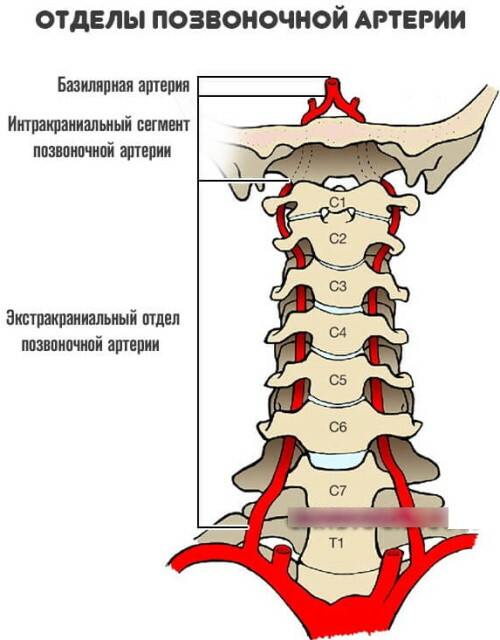
- violation of sensitivity in the arms and legs, as well as in the neck.
If untreated, the disease gradually progresses, and symptoms become more pronounced:
- loss of consciousness, fainting;
- violation of coordination of movements;
- staggering gait;
- loss of orientation in space.
Symptoms of the pathology become more pronounced in elderly patients.
Hypoplasia of the v4 segment of the right vertebral artery
This segment is part of the basilar vessel. The manifestations of the pathology will be similar to the general symptoms, as well as to the signs characteristic of the pathologies of other parts of the artery.
Because the vessels supply different areas of the brain, symptoms can manifest themselves in different ways and with different intensities.
Moderate hypoplasia of the right vertebral artery
This form of violation is one of the most favorable and does not manifest itself in any way throughout a person's life. Pathology is discovered by chance during preventive examinations.
The development of consequences in this type of disorder occurs extremely rarely, since the function of the artery is practically not impaired.
Complications and consequences of the disease
Hypoplasia of the right vertebral artery is a disease that is characterized by a moderate course, but it can also have a pronounced character. In the absence of therapy, the disease can gradually progress and lead to the development of severe complications.
In addition to the general signs characteristic of hypoplasia, more dangerous conditions may occur:
- the formation of blood clots in the area of the affected artery;
- chronic migraines;
- vascular dementia;
- ischemic stroke and other circulatory disorders in the brain.
Also, the patient has chronic fatigue and decreased performance, a complex of disorders from the autonomic nervous system is formed.
Diagnosis of hypoplasia of the right vertebral artery
Diagnostics allows you to determine the degree of development of the pathology and choose the most appropriate treatment.
Research types:
- general blood analysis;
- specific blood tests;
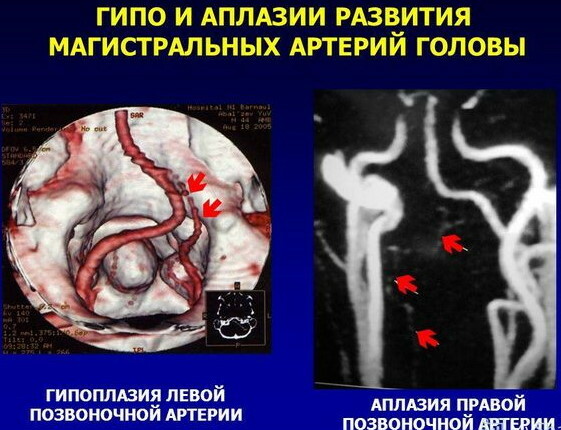
- Ultrasound of the vessels of the head and neck;
- angiography;
- computed tomography (CT);
- magnetic resonance imaging (MRI).
This study will determine the diameter of the artery. The deviation is considered to be indicators less than 3 mm.
Differential diagnosis
Differential diagnosis is necessary to differentiate between other diseases because symptoms characteristic of hypoplasia can occur with other disorders - dementia, entrapment nerve.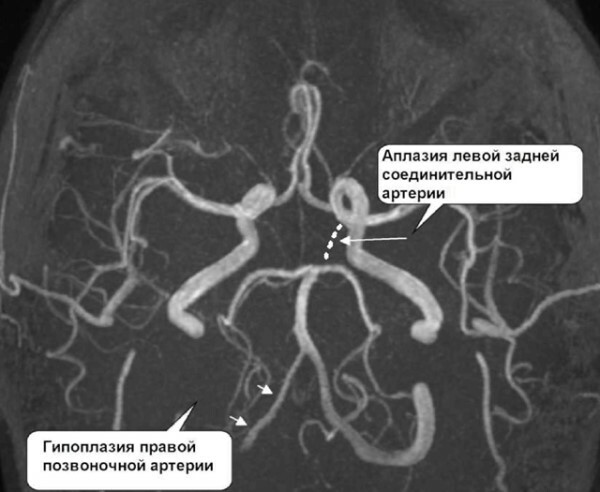
As a research, a functional test is used, which will allow to establish the type of violation and determine the degree of reversibility of the pathology. For this, a hypercapnic test is prescribed, which evaluates the blood flow velocity and the degree of narrowing of the artery.
Based on the data obtained, a diagnosis is made.
Treatment
To eliminate the pathology, complex therapy is prescribed. Moreover, it can be both medication and with the use of invasive techniques (surgery).
Medicines
First of all, various medications are prescribed.
the following means can be used as means:
- Vasodilators - Trental, Pentoxifylline.
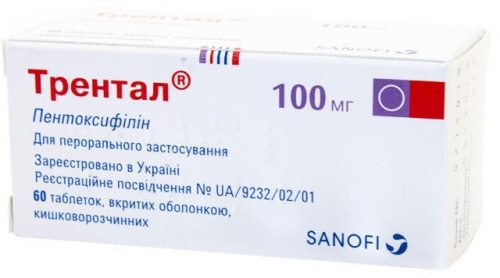
- Drugs that improve cerebral circulation - Vinpocetine, Cavinton, Piracetin, Phezam.
- Nootropic drugs - Cerebrolysin, Aminalon, Vinpotropil, Piracetam.
- Calcium channel blockers that affect the blood vessels of the brain (BMCC) - Cinnarizine, Nimopin.
- Tissue regeneration stimulants - Actovegin, Methyluracil, Solcoseryl.
Treatment regimens (dosages, course) are established by the treating specialist according to the severity of the disorder and other features of its course.
Vitamins
Hypoplasia affecting the right vertebral artery is a disorder that can lead to general malaise. This leads to a decrease in the amount of nutrients and a deficiency of vitamins and minerals.
Vitamin complexes and preparations are also part of the complex treatment. They are able to support the immune system and other internal systems of the patient, and also prevent the development of complications.
| Vitamins | Action | Where is contained |
| Vitamin A (retinol) | It is used as a prophylaxis for the development of atherosclerosis, increases metabolism. | Dairy products, bell peppers, pumpkin, fish oil, carrots |
| Vitamin C (ascorbic acid) | The substance prevents the deposition of cholesterol plaques, helps to strengthen the walls of blood vessels and the heart. | Berries and fruits (especially citrus fruits) |
| Vitamin P (rutin) | Strengthens and increases the strength of the vessel wall. | Berries, citrus fruits, rose hips |
| Vitamin E (tocopherol acetate) | Prevents toxic damage to the body, is a natural antioxidant, improves the metabolism of fats, proteins and carbohydrates. | Vegetable oils, eggs, nuts |
| Vitamin B6 (pyridoxine hydrochloride) | Improves metabolic processes in the body, helps to remove excess cholesterol. | Dairy products, fish, legumes, brown rice |
In this case, both pharmaceutical preparations and various dietary supplements can be used. In some cases, nutritional adjustments may be required.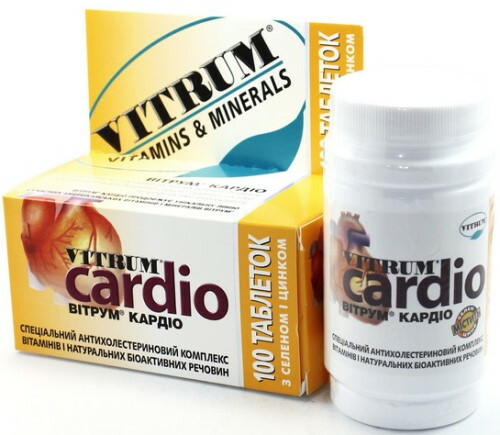
Among the pharmaceuticals, the most effective are vitamins, the name of which contains the word "cardio" - Vitrum cardio, Cardio Forte, Centrum cardio.
Physiotherapy
Physiotherapy is prescribed to maintain and improve the general condition of the patient, as well as symptomatic treatment.
Types of therapy:
- Exercise therapy (therapeutic and physiological culture). A set of various exercises is being developed that contribute to the overall strengthening of the body and the restoration of blood circulation.
- Treatment with mud. The therapy helps to stabilize the work of the central nervous system and the cardiovascular system.
- Water procedures - hydrotherapy (hydromassage, contrast shower, baths with mineral water, pine baths).
- Dry carbon dioxide baths. Prescribed for high blood pressure and vasoconstriction.
The physiotherapy course is usually 1.5 weeks. However, the terms can be changed by the attending physician if necessary.
Traditional methods
Traditional methods of treatment are used as an auxiliary therapy, since they are not able to cope with the disease on their own.
Recipes:
- Infusion of motherwort herb and dry hawthorn berries. Take 6 tbsp. plants and poured into a thermos. Pour 1.5 liters of boiling water and insist overnight. Filter the resulting mixture and take 100 ml no more than 4 times a day.

- Lemon and garlic remedy. Squeeze the juice from 10 fresh lemons and mix with 5 chives of garlic crushed into gruel. The mass is mixed with 1 liter of natural honey and poured into a jar with a tight lid. Place the product in the refrigerator for a week. Consume for 4 tsp. l. in 20-30 minutes. before the evening meal.
- Bean leaf decoction. Recommended proportions are 1:10. Take 100 ml 3 times a day half an hour before meals.
It is also recommended to consume natural honey and dried apricots daily. Traditional medicines are used only with the permission of a doctor. Before using the techniques, it is imperative to make sure that the patient is not allergic to the components used.
Herbal treatment
Hypoplasia of the right vertebral artery is a pathology that requires complex treatment, including the intake of various herbs (according to the testimony of a specialist).
The most effective herbal remedy is dandelion. The plant prevents the deposition of cholesterol, prevents the development of anemia and strengthens the joints. Dandelion leaves are recommended to be added to various dishes - soups, broths, salads. The rhizomes of the plant, ground into powder, should be taken in 1/3 tsp. 3 times a day for 30 minutes. before meals.
Other recipes:
- Healing tea. Ingredients: 20 g of St. John's wort, 15 g of birch leaves, 50 g of willow tea, 15 g of motherwort. Mix with each other. Take 1 tbsp. mass and pour 0.3 liters of boiling water. Insist for 20 minutes. Take instead of tea.
- Elecampane tincture. Take 30 g of rhizomes and pour 0.3 l of vodka. Insist in a dark and dry place for 40 days. Dosing regimen: 35 drops are diluted in 100 ml of water and taken in 20 minutes. before meals.
Also, such plants as lemon balm, adonis, mistletoe, mint, dried cress have a healing effect.
Homeopathy
This method of treatment should be prescribed by an appropriate specialist (homeopath).
Possible remedies:
-
Cholesterol - used in the presence of atherosclerotic plaques. The drug improves blood vessels and lowers cholesterol levels.

- Gold iodine - used in the deposition of cholesterol plaques in the cerebral vessels.
- Conium - it is prescribed for stroke or during the rehabilitation period.
- Crategus - helps to improve blood circulation in the brain.
Complex preparations can also be used to help restore cerebral circulation - Traumeel, Zel T, Discus compositum.
Before accepting funds, a mandatory consultation with both specialists is required.
Surgery
Surgery can restore normal blood flow to the affected area.
At the moment, the following types of exposure are applied:
- Stenting. In the area of the constriction, a special insert is introduced, which prevents further development of the process. In some cases, the stents (brackets) are saturated with drugs, which prevents the formation of blood clots and scars in the area of the affected vessels.
- Angioplasty. With the help of instruments, the restoration of the previous volume and shape of the damaged artery is carried out.
- Recovery plastic. The operation implies the removal of the affected area and the installation of a prosthesis, which can be parts of the patient's veins and arteries. Such an intervention is used in extremely rare cases and in severe conditions of the patient.
The first 2 types of operations are often carried out in combination with each other.
Exercise therapy
Hypoplasia of the right vertebral artery is a disease that, after surgery, requires compulsory physical exercise of low intensity. Therapeutic and physiological culture allows you to restore and normalize blood flow in the arteries, eliminate spasms in the neck muscles, and also strengthen them. The complexes are selected individually by the attending physician. However, there is a classic complex that is used in most cases.
Exercises:
- Sitting on a chair and keeping your back straight, relax your arms and lower them down. Start rotating movements alternately in one direction, then in the other direction. When pain occurs, movements are performed more smoothly.
- Initial position. Lower your head down, trying to reach your chest with your chin. Fix the position for 10 s. The number of repetitions is 10 times.
- Initial position. Place your hand on your forehead and rest on it with a little force. Fix the position for 10 s and repeat 9 more times.
- Stand straight, relax your hands. Raise your shoulders to the maximum possible level and fix this position for 10 s. Straighten up and take a deep breath. The number of repetitions is 10 times.
- Lie on your back on the floor. Raise your head and hold the state for 10 seconds, then return to the previous position. Repeat the exercise 10 times.
This complex will eliminate discomfort in the neck and help avoid complications.
Hypoplasia of the right vertebral artery and sports
Sports activities for the disease are recommended to be carried out regularly. However, it should be borne in mind that the loads must be smooth and uniform.
Excessive overexertion can lead to the opposite result and cause complications.
The most preferred activities are hiking and swimming. If discomfort or pain develops, it is recommended to abandon such actions and choose other options.
Prognosis, disability
The chances of recovery are high. However, even with timely treatment, a complete clinical cure cannot be achieved.
It is possible to maintain a habitual way of life with minor restrictions in more than 70% of all registered cases.
An unfavorable prognosis will be only in the case of complications and untimely or incorrect treatment. In such situations, pathology can lead to disability with complete or partial paralysis.
With the development of symptoms indicating hypoplasia, you should immediately consult a doctor. To prevent damage to the right vertebral artery, it is recommended to undergo annual preventive examinations. This will avoid dangerous conditions and consequences caused by pathology.
Video about hypoplasia of the vertebral artery
Vertebral artery hypoplasia:



